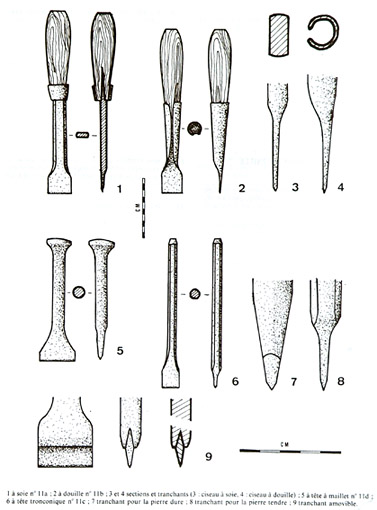William Dobson, of Canastota, New York, was another major US manufacturer of foundry molding tools from 1896 to 1932. Dobson's tools can still be found on eBay.
"William Dobson, Maker of Molders' Tools
"Dobson, born in Scotland in 1867, spent his early years as an apprentice to a smith, mastering his skills on the forge, anvil, hammer, and iron. His abilities landed him a good job when he immigrated to America, settling first in Detroit, Michigan. While there, he developed his artisan skills, working in steel, iron, and brass. He eventually took to making molder's tools. In 1887, he accepted employment with Goodwin & Burr [4th & Porter Streets, Detroit] as a tool maker. In time, he became a member of management, and he eventually gained ownership of the company.
 |
| Angell & Dobson stamp |
"Dobson moved with his wife and children to Canastota in 1896. He decided to continue making the celebrated "Detroit" molders' tools here. He started a partnership with Thomas Angel [Angell]; the men ran their operations from a plant across from the old Chapel St. School. After this partnership dissolved in 1901 [Angell was severely injured when a grindstone burst in the plant], Dobson chose a new location on Spencer Street for his new plant. This facility was fully equipped for large scale manufacture, and employed 30 men at one time. Dobson's tools were sold all over the North American continent and even abroad. His business continued to thrive until its closing in 1932. Dobson started preparing for his retirement in 1930. He built a gas station, known as "Wee House", on Seneca Turnpike in Quality Hill. A small house was added on to the building, and Dobson lived there with his wife until his death in 1937.
"William Dobson took an active interest in the community. He served as a Canastota village trustee for three terms and even ran for mayor in 1910. He also served on the local school board between 1913 and 1922. He was active in various fraternal and trade organizations as well, including the Masons."
.jpg)
.jpg)
.jpg)
.jpg)
.jpg)
.jpg)








.jpg)







.jpg)
.jpg)